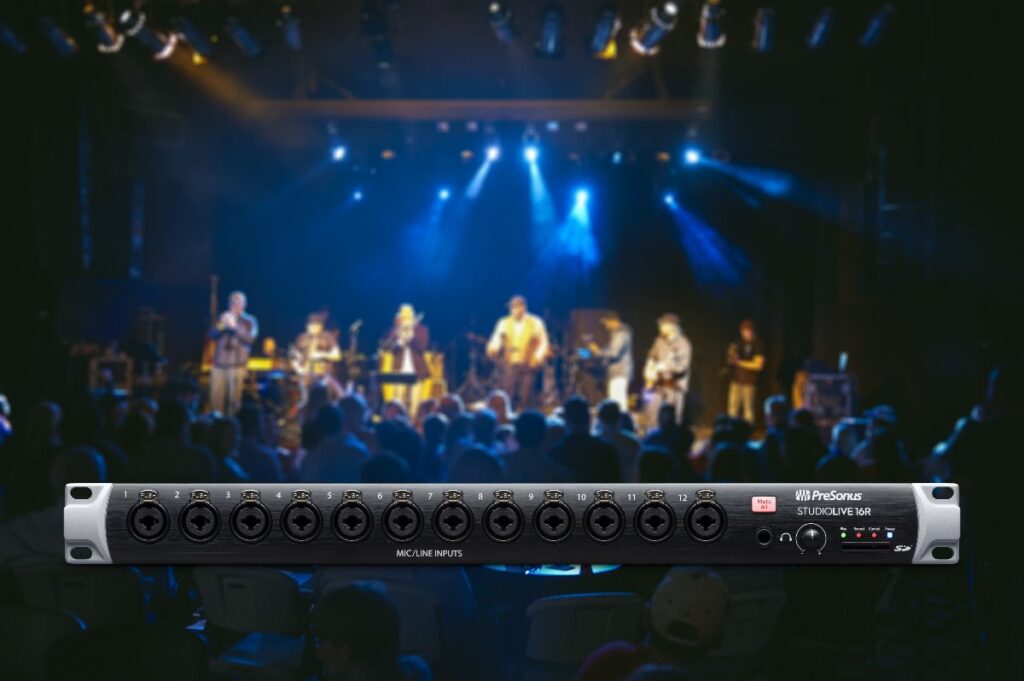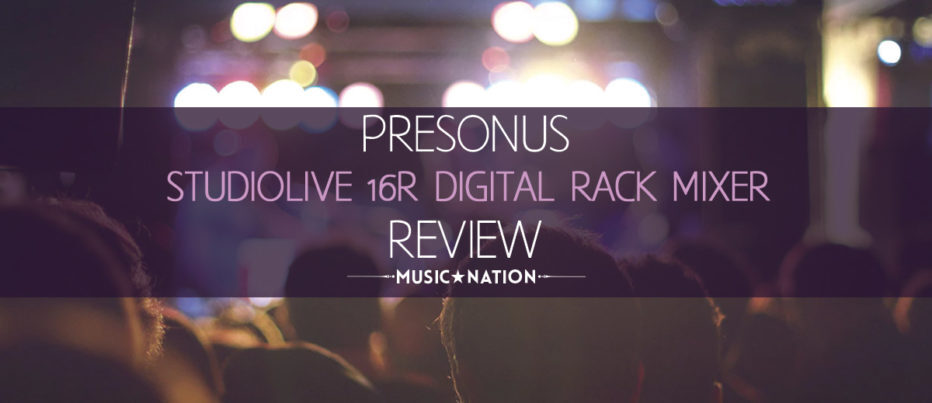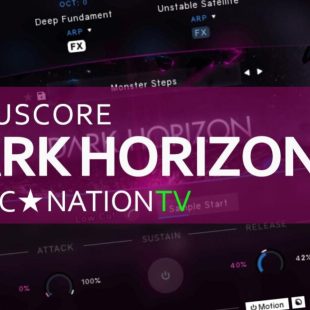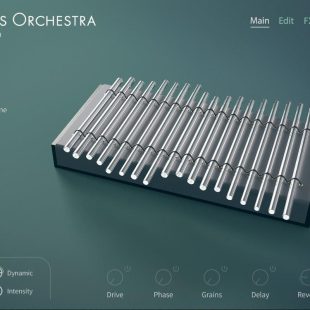PRESONUS STUDIOLIVE 16R – SMALL FOOTPRINT, BIG SOUND
PreSonus are a big vision outfit. From DAW to desk and beyond, it has a breadth that few other manufacturers can match. And their latest hardware in the mix rack space shows a determination to deliver an even bigger PreSonus ecosystem. There are three new Series III rack mixers in the range – sporting 16, 24 or 32 inputs. I had the 16R for this review.
The 16R is a one U rack mixer with 16 mic/ line inputs on combi XLR/jacks with an option of a stereo RCA phono input for your unbalanced kit on inputs 15 and 16. The main stereo outputs are on XLR alongside six flex mix outputs on quarter-inch jacks for Aux, groups or matrixes. There are also two internal FX sends and two independent FX processors. And the jewel in the crown – AVB.
The new PreSonus mixers have AVB as standard, and PreSonus are supporting this functionality with products like the SW5E five-port AVB switch with PoE and the ‘coming soon’ EarMix 16M – AVB personal monitor mixer see the SD recorder control until you plug a properly formatted SD card in. Oh, and see the GEQ is post-headphone feed on all mixes, which caught me out.

I don’t really like trusting my mix to the ethernet so the ability to have a wired network connection to the mixer is a priority for me, but I’m very happy to take advantage of wireless control and have the iPad set to ‘Meters’ mode as a very handy meter bridge or of course as a roaming control surface when required. Mind you install QMix-UC on your iPhone or Android device and you can also offer control of monitor mixes to the talent.
The 16R nails processing with Presonus’s latest Fat Channel on every channel and every bus. And there are eight 32-band GEQs available – one for each output on the 16R and while editing the GEQ you have an RTA display option for that bus.
The latest version of Fat Channel has new vintage processing options in compression and EQ and there are new reverb and delay processors available on the two onboard FX buses. With the market awash with rack mixers, we are pretty familiar with the genre.

At first sight, the 16R offers pretty standard features. There’s software control of the mixer through the Universal Control or UC app. UC is a flexible beast – I ran it on a Mac connected by USB, I ran it on a Windows 10 machine connected to the 16R on my local network and I ran it on my iPad which was wirelessly connected to the same network.
At first glance, I found the UC app very clean, in fact, simple to the point where I struggled to find some of the features. But invest a little time and the depth of the mixer becomes apparent – all the features are there, you just need to find your way around the presentation of them.
The 16R offers both traditional groups and DCA spill groups. Spill groups give you the opportunity to select a group master – say drums – and instantly the visible channels are reduced to just those on the drums DCA group. This is a great way to mix especially on a screen when you are continually focusing on only the most relevant information.

Unlike the DCA groups, the subgroups can have processing applied and are routed to a physical output. Aux sends can be pre-fader pre-processing or pre-fader post-processing or post-fader.
One thing that sets the 16R apart from the rash of rack mixers is the AVB networking. With Series III Presonus has implemented the latest AVB standard meaning interoperability with other compliant AVB gear. Connect it to a PreSonus Series III mixer with one Cat 5e and you can use the 16R as a stage box, or a full-blown monitor mixer. Or run your AVB into your Mac (Thunderbolt indicates compatibility but High Sierra is currently a problem) and all your 16R ins and outs are available to your DAW.
Now your audio interface can be 100m from your computer or right next to it if want to use the onboard USB 2 connectivity. Use an AVB switch (both PreSonus and MOTU have them available) to network together multiple AVB units and share inputs and outputs across big spaces and complex installations, with low latency and guaranteed synchronisation.
Key Features:
- Create, save, and edit up to 100 scenes
- Studio-quality converters with 115 dB dynamic range
- Vintage EQ and compressor models available on every input
- Onboard stereo SD recorder
Listening to the 16R is a rewarding experience – I tried running some expensive mic amps into the line inputs and also recorded through the 16R E to E to get a feel for audio quality and it is certainly no slouch. The build quality of the box is excellent and the software is comprehensive. When I look at the price I can’t help feeling this is a bargain.
Full details on the PreSonus main site www.presonus.com







